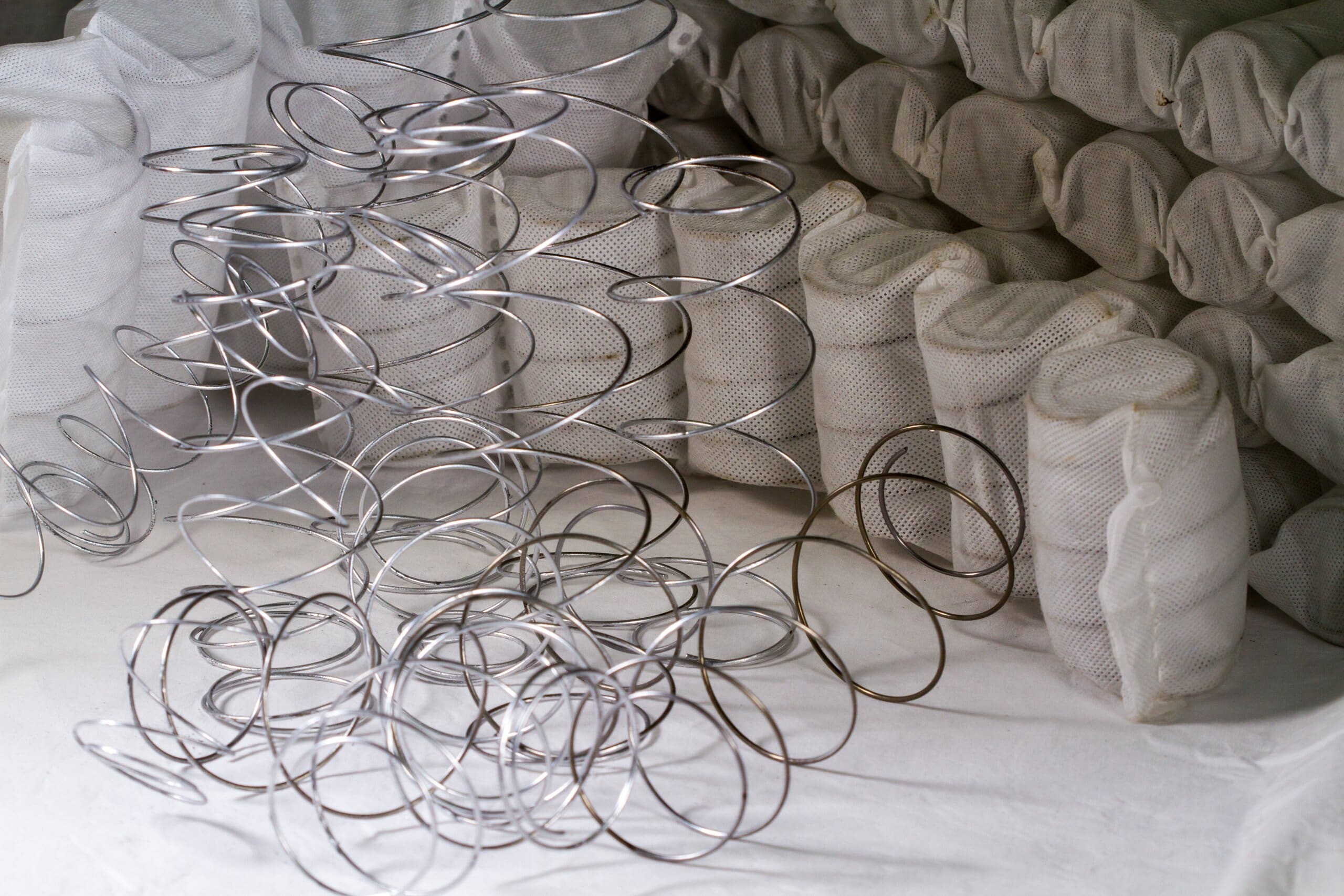Speak to an expert: 0333 0069769
Discover the difference between open coil and pocket sprung mattresses, plus the pros and cons of both.
When shopping for a new mattress, you may come across the terms 'pocket sprung' and 'open coil', but what do they actually mean, and do they make a difference? In this guide, we'll teach you all about pocket sprung vs open coil mattresses, give you the pros and cons of the two main mattress coil types, and hopefully help you decide on the best mattress for your needs.

As the name suggests, pocket sprung mattresses contain lots of springs sewn into pockets of fabric. Each spring works completely independently of the others in the mattress, only reacting to pressure directly applied to it. Most high-quality pocket sprung mattresses will have at least 1000 springs, with firmer mattresses reaching up to 3000 springs.
Of course, these mattresses also contain soft fillings, and sometimes even a memory foam layer along the top, making them quite soft and comfortable. Some people consider pocket sprung mattresses to be the 'updated' version of open coil mattresses, as they've taken the traditional use of springs and completely modernised them.
To find out more, read our guide on choosing a pocket sprung mattress.
Now that you know what pocket sprung mattresses are, you're probably wondering if they're the right choice for you. Here are some pros and cons to help you decide:
Open coil mattresses contain springs that are all connected to each other by wire rods, running from side to side inside the mattress. The springs and wire rods are usually shaped from just one sheet of steel, which is why everything is interconnected.
The springs all work together to evenly distribute your body weight as you lay on the mattress. They are usually either soft, medium, or firm, and the firmness level is actually determined by the thickness of the wire rods rather than the number of springs in the mattress. Open coil mattresses are also known as traditional sprung mattresses, coil spring mattresses, or standard coil mattresses, and they're often used in orthopaedic or specialist firm mattresses as they can easily create an extra firm sleeping surface.
If you’re interested in finding more information on this type of mattress, you can read our dedicated open coil mattress guide.
Open coil mattresses are one of the most popular on the market, but why is that the case? What are the disadvantages to owning this type of mattress? Take a look at the pros and cons below:
The main difference between open coil and pocket sprung mattresses is how the springs inside are arranged. As described earlier, open coil springs are all connected to each other whilst pocket springs exist within their individual fabric pockets.
Open coils are very easy to manufacture and have been around for quite some time, while pocket springs are a more advanced, recent technology. Open coil mattresses are usually cheaper than pocket sprung mattresses, because of their ability to be mass-produced with ease. Some perceive this price difference as an indication of pocket sprung mattresses being of higher quality, which is usually true.
While both types of mattresses are relatively supportive, the pocket spring system provides much more sturdy support. Open coils are great for general support, but doesn't provide targeted pressure relief like the pocket sprung does. Pocket sprung mattresses can be a lot heavier than open coil mattresses, but are available in boxed mattress form for convenience.

So, which type of mattress is best? Take a look below at some of the most important factors to consider when buying open coil vs pocket sprung mattresses and find out which is the better option for you.
Open coil mattresses are arguably the better option if you're on a budget. The cheapest ones will start at £99 and increase in price to a little over £1000, but never much more than that. Pocket sprung mattresses start at around £150, and can go up to nearly £2000 depending on how luxurious you want the fillings.
Pocket sprung mattresses provide much better targeted support than open coil mattresses, as they are able to move independently to precisely support pressure points. Open coil mattresses, however, can still provide adequate support, especially in orthopaedic mattresses, but if you're looking for the best mattress for back pain, we'd go for pocket springs.
Both mattresses are great for any type of sleeping position, as this will come down to firmness. However, a pocket sprung mattress will be able to provide more targeted support if you sleep on your front or side, whereas an open coil mattress is perfect for back sleepers.
Pocket sprung mattresses will be a bit more durable than open coil mattresses since their springs are independent of each other. This means that there's a small chance of any dips or lumps developing, since the springs don't all act as one. However, open coil mattresses can be easier to maintain as they are lighter, and therefore easier to turn around every few months. They are also cheaper to replace, which may cancel out their shorter life span for some customers.
It's no surprise that pocket sprung mattresses are the better option when it comes to movement in bed. They don't transfer movement, unlike open coil mattresses, and therefore cause very little disruption when someone gets in and out of bed, or changes sleeping position.

Overall, both have their benefits and will be the perfect option for the right person. If you're someone on a budget who doesn't share a bed, and doesn't need targeted support, go for open coils.
Alternatively, if you're willing to spend a bit more money, need good overall support, or share the bed with a partner who can't keep still at night, pocket springs are the way to go!
Curious to know more about pocket sprung mattresses, and how they compare to other higher-end mattress types? We've got you sorted. Check out our guide about pocket sprung vs memory foam vs hybrid mattresses to figure out which type is the one for you.